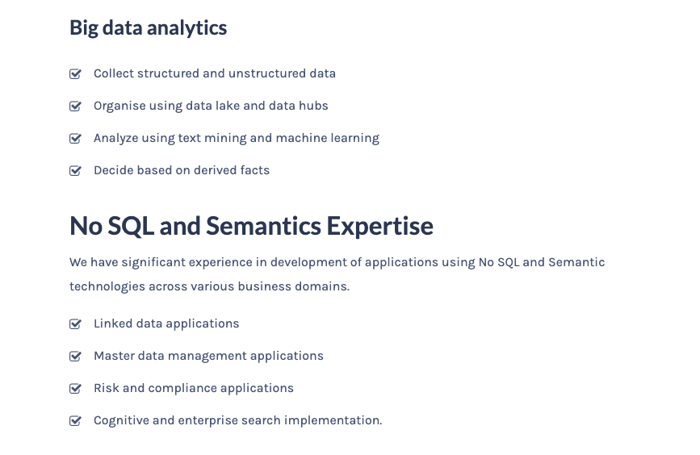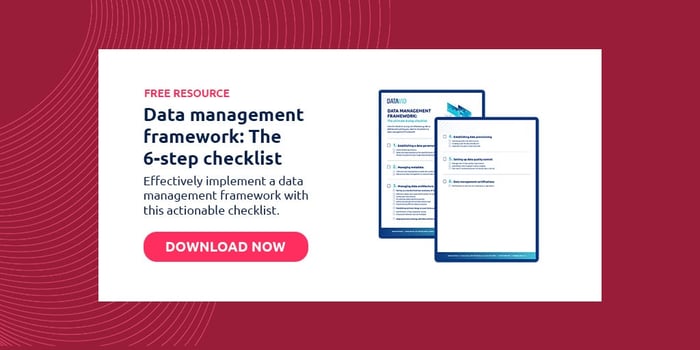5 minute read
Data hub vs Data lake vs Data warehouse: How do they different?
Data hub vs Data lake vs Data warehouse. The data world is filled with these similar buzzwords: they are all different and all crucial for your data plan.
Table of contents
The key difference between data hubs, lakes, and warehouses is that the data hub can’t store data for the long term as it’s used primarily for presentation purposes.
Data lakes and warehouses are long-term storage mediums instead.
Enterprise data is the lifeblood of your company.
The mishandling of it can have serious consequences, including financial losses and flaws in strategic decision-making.
The proper cataloging and management of enterprise data are crucial to your company’s long-term success.
Data hubs, data warehouses, and data lakes are the components within a company’s infrastructure that handle this data.
It is important to understand not only how these components are different from one another, but also how they complement each other in their application.
Both data lakes and data warehouses can be described as storage mechanisms for enterprise data, but these two terms are not interchangeable.
A data lake can be described as a “pool” that holds vast amounts of raw data, data that doesn’t necessarily have a predefined purpose; whereas a data warehouse is a repository for structured, filtered enterprise data that has been pre-processed for a specific purpose.
Both data lakes and data warehouses can be described as storage mechanisms for enterprise data, but these two terms are not interchangeable.
A data hub’s purpose isn’t necessarily to store data.
Rather, data hubs play an administrative role in the flow of data between source systems, target systems, and users.
Data hubs are the “center” of a sort of hub-and-spoke relationship between systems and allow those systems to distribute and exchange information through the data hub.
There are real benefits in store for a company that genuinely understands not only the distinctions between these three components but also how they come together.
What is a data lake?
A data lake is an economical, single repository (or storage receptacle) that is able to hold structured and unstructured enterprise data for a single company or organisation.
The data stored in a data lake is often unrefined (nor is it even searchable in most cases) and other software tools are often required in order to analyse or operationalise the data.
The data stored in a data lake is often unrefined and other software tools are often required in order to analyse or operationalise the data.
The unrefined raw nature of the data in data lakes makes them appealing to development teams that prefer to use open-source tools and prefer a low-cost analytical work-bench area.
In general, data lakes make low-cost data storage an option and they certainly do not require much in terms of labor or skill on the front end when loading data into a data lake.
However, it is worth mentioning again that data lakes are notorious for holding data that is of a limited quality unless a company is willing to invest in the additional labor and resources to add real value to the data that is stored in a data lake.
What is a data warehouse?
The data warehouse is considered a core component of your company’s business intelligence bringing together vast amounts of data from myriad sources and serving as the key resource in strategic business decisions and for analytical reporting.
Data warehouses are central repositories of structured and integrated data from multiple sources that are utilised primarily for reporting and data analysis purposes.
Data warehouses can collect data on a large scale and they are important for companies that desire a clear understanding of their own business.
What is a data hub?
In 25% of cases, participants of a recent survey thought that a data hub was a data lake solution, but the two are vastly different at their core.
A data hub should not be seen as a storage solution for your data.
Rather, a data hub is an “administrative overseer” of the flow and exchange of data between sources and endpoints.
Like the central component of a hub-and-spoke operation, it manages and exchanges enterprise data.
A data hub is an “administrative overseer” of the flow and exchange of data between sources and endpoints. Like the central component of a hub-and-spoke operation, it manages and exchanges data.
Such a component gives more uniformity to enterprise data and allows diverse users to access information rapidly and accurately.
A data hub supports operational and transactional applications, something that data lakes are not designed for.
They can be very resourceful to users who want to tell the system precisely what they would like done with the enterprise data.
Data hubs also allow your company a greater zone of comfort in terms of dealing with the legalities because they can tell you who in your company has access to what data and where data is stored.
Differences between data hubs, lakes & warehouses

Data hubs are progressively gaining more attention from businesses that are seeing the advantage of building their own, but this technology is oftentimes still recognised as an interchangeable option with a data warehouse or data lake. In this case, the best way to understand something is perhaps to first understand what it is not.
A data hub isn’t strictly a storage mechanism for your enterprise data, it operates as a hub-and-spoke relationship, serving as a point of mediation and moving data efficiently between endpoints, applying governance to the data that flows across a company’s infrastructure.
Data lakes and data warehouses are endpoints that offer limited governance controls, & only in a reactionary manner.
Data lakes and data warehouses are endpoints that do offer limited governance control, but only in a reactionary manner.
If we take a closer look exclusively at data lakes and data warehouses, one key distinction is the “quality” of the enterprise data hosted on either option.
The enterprise data hosted on a data lake is largely unrefined data with limited quality assurance.
Often the enterprise data that is stored on a data lake needs to be worked over by users in some way in order to add real value, but they are an attractive option for storing enterprise data from a cost perspective.
Data lakes are an attractive option for storing unrefined enterprise data from a cost perspective.
Finally, the role of a data warehouse is to hold structured and refined data that can be used reliably for analytics and is considered a key resource for business intelligence matters.
Data lakes and data hubs do serve different purposes, and having a combination of the two is feasible.
A thorough assessment of your company’s needs is the first requirement in determining whether a data hub, lake, and/or warehouse is right for your company.
Comparison table
| Data Hub | Data Warehouse | Data Lake | |
| Primary Usage | Operational | Precise Analytics & Reporting | Analytics (Est.) & Reporting |
| Cost | High | High to Mid | Mid to Low |
| Data Quality | Very High Quality | High Quality | Mid to Low Quality |
| Users | Business Users | Business Analysts | Developers |
| Architecture | Hub & Spoke | Centralised | Centralised |
Implementing data hubs, lakes, & warehouses

When evaluating these three components in the determination of how to best handle your core enterprise data, it is important to know that the 3 entities are not alternatives to one another, but they can be implemented to complement each other.
For example, data lakes can be complementary to data hubs.
A data management platform can be defined as an integrated solution that consists of the functionalities of data hubs, lakes, and data warehouses.
Without a properly constructed data management platform, your company can find itself dealing with a complicated landscape of silos where many tools and resources are needed to properly access the data.
Without a properly constructed platform, your company can find itself dealing with a complicated landscape of silos where many tools are needed to access the data.
Data hubs, data lakes, and data warehouses are the technical resources responsible for storing, routing, and processing the raw enterprise data your company will use to make key business decisions that affect the long-term health of your company.
It is only when these components are clearly understood and combined that they can form a robust, reliable data system that can be very resourceful in the support of data-driven initiatives and business intelligence.
Frequently Asked Questions
What is the difference between a data hub and a data lake?
A data lake is an endpoint for data collection that serves to support the analytics of an enterprise. A data hub serves as a point of mediation and data sharing.
What are some reasons why data lakes fail?
Data lakes can create information silos. Integrating silos is known to be especially difficult so a company runs into challenges trying to combine sets of data needed for analytics. Data lakes were conceptualized on an obsolete premise that all unstructured data is meant to be stored. Some data is stored in lakes, some in warehouses. This breaks the unification of data.
Is Hadoop a data lake?
Hadoop is a component that can be used to build a data lake. A data lake is recognized as an architecture. Hadoop is a component of that architecture.
What other data lakes are available?
Options include cloud storage services such as Google Cloud Storage and Amazon S3 or a distributed file system such as Apache Hadoop.




